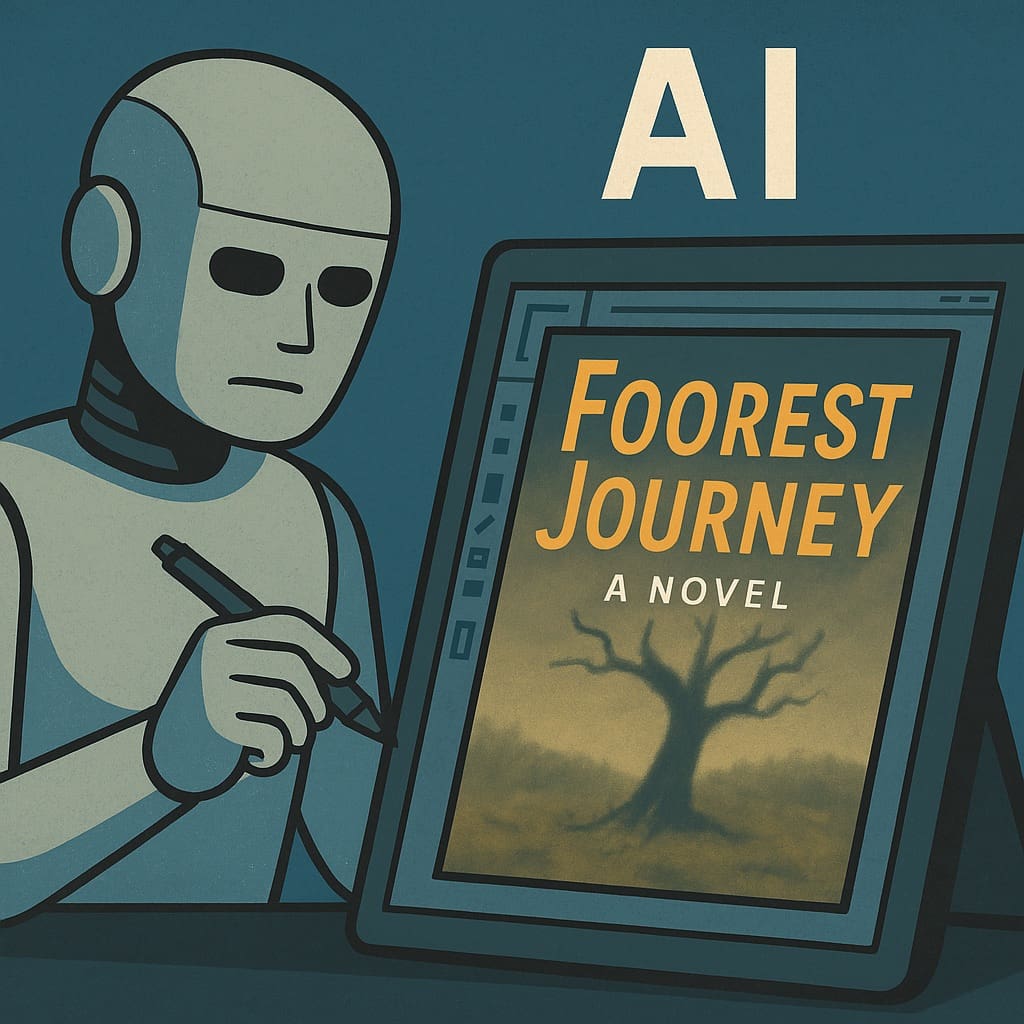Generative AI, on the other hand, is *fixable*. Because it lets us control what we create. If you want a South Asian sorcerer in a wheelchair with a pet hawk? We can do that now. Before AI, we would’ve had to approximate — or worse, whitewash the character with “close enough” stock imagery.
This is one of the most meaningful benefits of AI in design: authors can finally get covers that reflect the diversity, nuance, and originality of the characters and stories they’ve written — without compromise.
The absolute madness
The most mind-blowing thing about generative AI is how well it handles the impossible. Want a fork made in the style of a dystopian luxury cult aesthetic? You got it. Need a 1920s jazz dragon sipping absinthe on a moonlit balcony? Say no more.
Here are a few recent experiments (prompted for fun, but surprisingly usable as training data):



This ability to generate never-before-seen objects makes AI an ideal assistant for speculative fiction, fantasy, and sci-fi — genres that rely heavily on the visual invention of impossible things. With the right prompting and polish, we can create cover elements that feel cinematic, lived-in, and on-brand for your world.
The tech and its users will only get better
Take a look at the evolution of AI-generated images:

Now imagine what that same AI will be capable of in 2026, or 2027. The images are getting cleaner, more detailed, more photorealistic, and stylistically coherent. The tools are improving — and so are the people using them.
And no, we’re not talking about “AI doing everything.” We’re talking about designers learning to drive these systems like pros — combining technical skill, genre knowledge, taste, and a healthy sense of when to take the wheel back from the algorithm.
Some final thoughts
There are two main elements to creative work: imagination and creation.
- Imagination is the spark — the vision, the idea, the why.
- Creation is the execution — the crafting, refining, styling, and delivering of that vision.
Generative AI doesn’t imagine. But it can help us create.
And when used intentionally — guided by a designer’s skill and artistic judgment — it becomes a powerful way to bring a human idea to life, faster and more effectively than ever before.
If you don’t want it used on your project, that’s fine. Our opt-out box still exists (though with AI now embedded in Photoshop, a “completely AI-free” workflow is becoming more theoretical than literal).
But for those who are open to it, the rewards are real — and the results are beautiful.
Thank you for reading. For the full series of articles on how Damonza approaches AI in book design, visit:
- The Legal and Ethical Use of AI
- Just Another Tool in the Toolkit
- Addressing Concerns & Overcoming Hesitation
Every character in this article was typed by a real human. Swear it on the GlubCore fork.






3 Responses